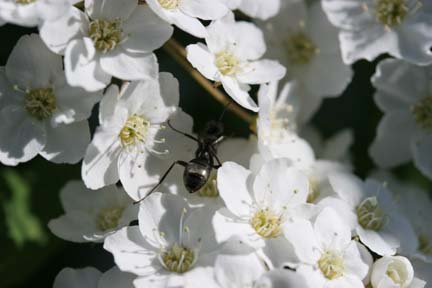Are Bug Zappers Really Effective in Opposition to Mosquitoes?
본문
 Are Bug Zappers Really Effective Against Mosquitoes? To research the effectiveness of bug zappers on mosquitoes, the Department of Entomology and Applied Ecology at the University of Delaware spent 10 weeks analyzing bug zappers. Altogether, over 13,000 insects were zapped and collected. Based on the research's results, bug zappers are killing useful insects like beetles and moths, which can result in negative effects on local ecosystems. Experts and studies from Colorado State University Extension and the American Mosquito Control Association concluded that bug zappers are not effective at controlling biting mosquitoes. Experts cited in an article from the Wirecutter also concluded that bug zappers have the unintended consequence of killing helpful insects. Why Aren't Mosquitoes Drawn to Bug Zappers? Female mosquitoes (the mosquitoes who bite us) are hardwired to sense the engaging indicators that our our bodies emit. They do not care about zapper lights. After we exhale, we emit CO2, which a female mosquito can detect from far away. As she flies closer, our naturally occuring body-odor-chemistry helps her affirm that we are a source of blood. Seems, carbon dioxide and body odor chemistry are parts we will not control. But fortunately, there are a handful of voluntary actions that we can do to decrease mosquito presence. Mosquitoes want 7 days of stagnant water to grow. Tip and Toss standing water or containers that seize mosquito-breeding water round your home! They conceal in shady, dense plants. Does sunlight and wind movement via your yard's vegetation? If not, then you might want to contemplate trimming back on the unwelcomed mosquito hotel in your yard.
Are Bug Zappers Really Effective Against Mosquitoes? To research the effectiveness of bug zappers on mosquitoes, the Department of Entomology and Applied Ecology at the University of Delaware spent 10 weeks analyzing bug zappers. Altogether, over 13,000 insects were zapped and collected. Based on the research's results, bug zappers are killing useful insects like beetles and moths, which can result in negative effects on local ecosystems. Experts and studies from Colorado State University Extension and the American Mosquito Control Association concluded that bug zappers are not effective at controlling biting mosquitoes. Experts cited in an article from the Wirecutter also concluded that bug zappers have the unintended consequence of killing helpful insects. Why Aren't Mosquitoes Drawn to Bug Zappers? Female mosquitoes (the mosquitoes who bite us) are hardwired to sense the engaging indicators that our our bodies emit. They do not care about zapper lights. After we exhale, we emit CO2, which a female mosquito can detect from far away. As she flies closer, our naturally occuring body-odor-chemistry helps her affirm that we are a source of blood. Seems, carbon dioxide and body odor chemistry are parts we will not control. But fortunately, there are a handful of voluntary actions that we can do to decrease mosquito presence. Mosquitoes want 7 days of stagnant water to grow. Tip and Toss standing water or containers that seize mosquito-breeding water round your home! They conceal in shady, dense plants. Does sunlight and wind movement via your yard's vegetation? If not, then you might want to contemplate trimming back on the unwelcomed mosquito hotel in your yard.
 Dynatrap makes insect zapper traps that work on the identical principle as others. They attract flying bugs with warmth and carbon dioxide, insect zapper then catch them and stop them from escaping. For warmth, they use a fluorescent extremely-violet bulb, which additionally emits bug-attracting gentle. The primary distinction is that they don’t use propane to create carbon dioxide (CO2). Instead, they use a particular process. More on that beneath. Since they don’t use propane, which means no want to buy and change cylinders, and best of all, no maintenance issues with clogged traces or failure of the propane to mild-points that trouble many other traps. You still must plug them in, so you’ll want an out of doors outlet and an extension cord if you'd like dangle the lure greater than 7-10 feet from the outlet. The DT2000XL model is more expensive than the DT1000 mannequin, however it’s bigger, with a stronger fan and vibrant gentle, and might appeal to bugs from farther away, with coverage as much as an acre for the DT2000XL and a half-acre for the DT1000, in response to the producer.
Dynatrap makes insect zapper traps that work on the identical principle as others. They attract flying bugs with warmth and carbon dioxide, insect zapper then catch them and stop them from escaping. For warmth, they use a fluorescent extremely-violet bulb, which additionally emits bug-attracting gentle. The primary distinction is that they don’t use propane to create carbon dioxide (CO2). Instead, they use a particular process. More on that beneath. Since they don’t use propane, which means no want to buy and change cylinders, and best of all, no maintenance issues with clogged traces or failure of the propane to mild-points that trouble many other traps. You still must plug them in, so you’ll want an out of doors outlet and an extension cord if you'd like dangle the lure greater than 7-10 feet from the outlet. The DT2000XL model is more expensive than the DT1000 mannequin, however it’s bigger, with a stronger fan and vibrant gentle, and might appeal to bugs from farther away, with coverage as much as an acre for the DT2000XL and a half-acre for the DT1000, in response to the producer.
If you’ve definitely determined not to buy a propane mosquito lure, that is the subsequent neatest thing. I’ll list the professionals and cons of the 2 models collectively, as a result of they’re related. Its initial value is cheaper than propane traps. It doesn’t require the trouble and expense of replacing propane tanks. It catches other bugs apart from mosquitoes, though that’s not at all times good if they’re helpful ones. You should use it indoors or outdoors. The only sound is the quiet humming of the fan and there’s no odor. It’s secure for pets, children and the environment, since it makes use of no insecticides. The large one: it doesn’t necessarily kill mosquitoes particularly, so you could get more moths or different things as a substitute. You’ll must mount it about 5 to six toes off the bottom. One model, the DT1200, comes with its personal hanger, however in any other case, it needs a tree department, publish, wall, fence, and many others. to dangle or sit on.
If you utilize it outdoors, it may have some rain shelter to forestall water from stepping into the accumulating area. It wants an outlet 7-10 toes away or an extension cord. It’s tricky to empty with out letting some bugs escape. The claim that it emits an effective amount of CO2 has been questioned. Like all traps, it wants placed in a very good location, shady and sheltered, where mosquitoes can discover it, but not where you’ll be bothered by them. The lights in the top of the trap emit warmth and ultraviolet rays, which entice mosquitoes in addition to other insects, particularly moths at night. There are openings under the lights the place bugs can fly in. Once inside, they’re sucked down by the fan’s air currents into the retaining cage under, where they’re unable to flee and die inside a day. Unfortunately, light and warmth are just two of the things that appeal to mosquitoes, since what they’re primarily in search of are folks to bite.


댓글목록 0
댓글 포인트 안내